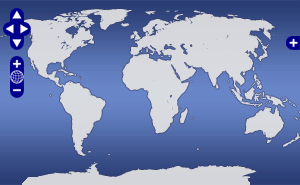Gridded bathymetry data (ESRI ASCII format) for the Discovery Transform Fault and possible nano-plate
This multibeam gridded bathymetry data set was collected using an EM300 swath sonar system during R/V Thomas Thompson cruise TN214. The primary goal of the cruise was to deploy 40 ocean bottom seismometers (OBS) and 7 seafloor geodesy tripods at the Quebrada/Discovery/Gofar (QDG) transform fault system on the equatorial East Pacific Rise. There were three target survey areas for high-resolution seafloor mapping: the Discovery and Quebrada transform faults, and a potentially rotating nano-plate just north of the Discovery transform fault. The surveys were typically carried out at a survey speed of 5 knots, with a fixed swath width of 4 km (135 beams/ping). The bathymetry was processed using the CARIS Hips&Sips software. The data file is in ESRI ASCII grid format, gridded at a resolution of 75m with no interpolation to fill data gaps, WGS-84, UTM zone 13S. The gridded TN214 bathymetry data is used in the Wolfson-Schwehr et al., 2014 paper. This project was funded by NSF Award 0242117, with Principal Investigators Jeffery McGuire, John Collins, and Robert Detrick.
McGuire, Jeffrey
Investigator
WHOI
Wolfson-Schwehr, Monica
Investigator
Device Info
Sonar:
Kongsberg:EM300
Platform
Thomas G. Thompson
UW:Oceanography
Awards
Data DOI
Quality
2
The data have been processed/modified to a level beyond that of basic quality control (e.g. final processed sonar data, photo-mosaics).
License
Data Files
References
Documents
Data Citation Information
ISO/XML Metadata
Expand

 Map View
Map View

